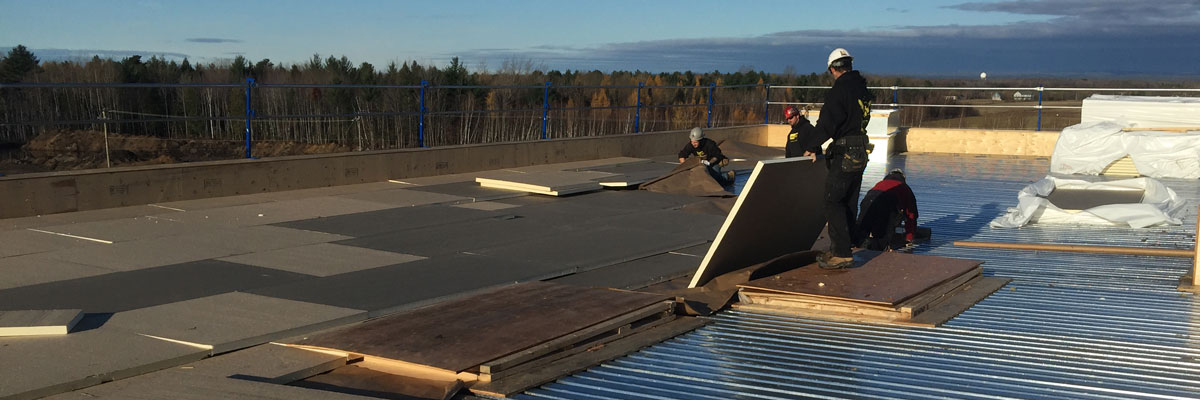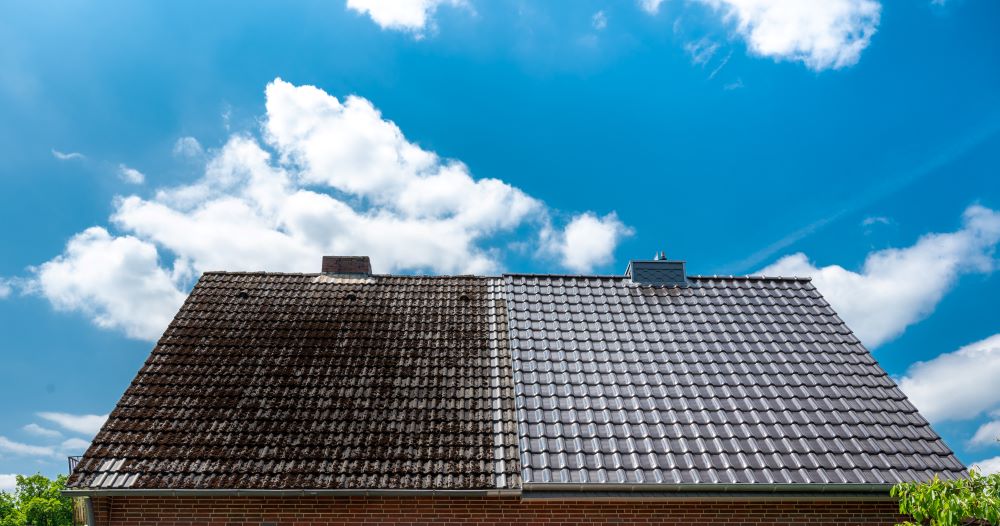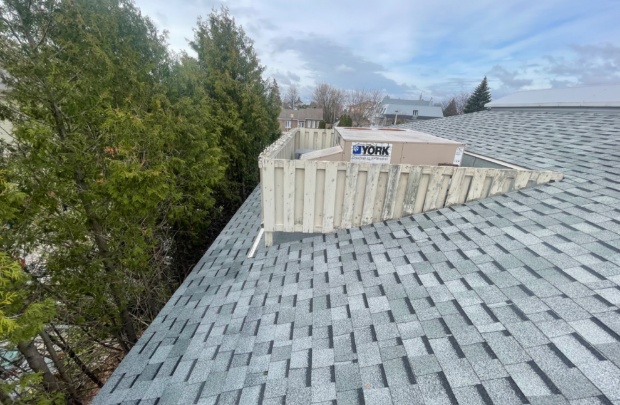The roof deck was long considered an area that wasn’t good for much, but recently it has become a popular building addition with many perks. As it turns out, this relatively simple extension can transform a plain old flat roof into a functional, attractive and hospitable living space.
But wait a second before picking up that hammer! Building a rooftop deck demands technical skills, knowledge of the correct use of protective equipment and checking up on local legislation.
The best thing you can do to prepare yourself to build a roof deck is read this article by our Montreal roofers! We’ll tell you what you need to know before getting to work.
Why build a roof deck?
Building a roof deck on your own home can radically transform your daily life and improve your living environment.
Private outdoor space
A roof deck is your own personal outdoor space. It’s a secluded sanctuary where you can escape the hustle and bustle of everyday life and enjoy moments of tranquil relaxation, away from prying eyes. You can use it as a reading corner, a space for sunbathing or simply a place to relax with your loved ones.
Urban garden
If you live in the city, building a roof deck gives you the opportunity to create a rooftop garden. You can plant flowerbeds, add window boxes or shrubs in containers, and even construct larger containers for vegetables and herbs.
Uninterrupted view of your surroundings
A rooftop deck also makes it possible to enjoy a panoramic view of the city. Contemplate the bustling cityscape or the natural beauty of the surrounding area and take a break from the daily pressures of life. Sunrises and sunsets become unforgettable spectacles, and you can even climb up to your deck to admire the stars at night.
A place to socialize
A roof deck can quickly become a go-to place for family gatherings, parties with friends or relaxing moments as a couple. It’s an ideal place to hold barbecues, enjoy outdoor cocktails or simply share good times with the people you care about.
Increased property value
Building a rooftop deck can also add value to your property. As well as making your building more attractive, a well designed and maintained deck can be seen as an asset to potential buyers.
Regulations and permits governing roof deck construction
Municipal bylaws and standards for roof decks differ across municipalities. Factors that come into play include the location, height and visibility of your building, and what the building is used for.
It should be noted that buildings located within special zones where the land or property is considered to have heritage value will likely face restrictions to constructing a roof deck.
For more information and to find out whether you can install a rooftop deck on your property, consult our experts or visit your borough’s website.
Different types of roof decks
One of the great things about roof decks is that they come in all shapes and sizes, so there are plenty of options to choose from according to your own preferences and needs. It all depends on the type of building you have, the climate you are living in and what you want to use your rooftop deck for. With these things in mind, here are a selection of the most popular types of roof decks.
Balcony
This type of roof deck is generally the simplest and least expensive to build. Once you’ve made the necessary structural modifications to your flat or pitched roof, you simply need to build a deck with adequate drainage. Treated wood is a very popular material for this type of rooftop deck.
Green roof
Green roofs are becoming more and more popular, especially in the city, as they allow you to enjoy an oasis of greenery and fresh air right on your own roof. With a green roof, you can take action against urban heat islands and improve the scenery while you’re at it!
However, considering the additional weight that this type of roof deck carries, it is critical to have a professional flat roof inspection done before beginning to build, to make sure your building’s structure is strong enough to support it.
And remember that planting a garden on a roof often requires the installation of a high-performance flat roof membrane and additional drainage systems to prevent water infiltration into the building.
Accessible roof deck
Accessible roof decks can be reached directly from inside the building. They are often equipped with a staircase or trapdoor. This type of rooftop deck is ideal for a relaxation area, leisure space or city garden.
Non-accessible roof deck
Unlike an accessible roof deck, a non-accessible roof deck is not intended for human use. Its main role is to improve thermal insulation and structural waterproofing. To this end, it is often covered with specialized construction materials like waterproofing membranes, gravel or roofing slabs that protect the roof from direct exposure to the elements.
Steps for building a rooftop deck
Building a roof deck is a complex project that demands careful planning and precise implementation. Here are the main steps to follow to successfully build a rooftop deck.
1. Assess feasibility
Before beginning your project, hire a flat roofing contractor to assess the feasibility of the idea and help you design reliable construction plans. A feasibility assessment will also involve verifying the strength of the existing structure to confirm that the roof can withstand the additional weight of the deck as well as furniture and people.
In addition to helping you design the plans and issue the specifications for your flat roof, a roofing professional will be able to give you reliable advice and inform you of the standards and regulations that apply in your area.
2. Obtain permits
Before starting work, make sure you obtain the necessary building permits from municipal authorities. Permit requirements vary according to location.
3. Prepare the roof
Preparing the roof is crucial to making sure your deck will be stable and strong. This step involves thoroughly cleaning the surface, inspecting and repairing any leaks or damage, and installing a quality waterproofing membrane to protect your building from water infiltration.
4. Install the deck
Now that your roof has been prepared, it’s time to install the deck. The deck structure can be made of wood, metal or composite materials, depending on your preferences and the requirements of the project.
Always try to opt for top-quality materials (elastomeric membrane, vapour barrier, treated wood, etc.). High-quality materials guarantee that your rooftop deck will last a long time and keep people safe as they enjoy the view on sunny days!
5. Waterproof the deck
Waterproofing is essential to protect your roof from the elements and avoid water infiltration problems inside the building. Apply a high-quality waterproofing product to the entire surface of the deck, making sure to seal all joints and connections.
6. Fittings and finishing touches
Once the structure and waterproofing are in place, you can fit out your new rooftop deck according to the plans you’ve drawn up. Install furniture, technical equipment (if any), plants or gardens, and any other elements included in the project design.
7. Final inspection
Before using your roof deck for the first time, check that everything is in place and ready to function. Check for effective waterproofing, structural soundness and compliance with building standards, and make sure there are no defects.
Important points when installing a flat roof deck
Although solid, the roof of a building or a house is still vulnerable. Altering its components will make it susceptible to bad weather, temperature variations and much more. As such, building a deck on top of a building will inevitably add weight to the structure, which could weaken it. Similarly, the screws, nails and tools used to assemble the deck can damage the roof covering, which can cause flat roof leaks.
For these reasons, leave the installation to experts. They will be able to take these aspects into account and determine the steps to follow to avoid deteriorating the siding and distribute the weight properly. They will also see if it is necessary to add rubber supports to shore up the construction.
Make sure your flat roof construction zone is safe
In addition to posing certain technical difficulties, this type of work is carried out at height. This implies considerable safety risks not only for the workers, but also for the passers-by and the occupants of the building.
For this reason, it is crucial to hire certified flat roofers to help you build your roof deck. They will establish a safety perimeter, take care of accident prevention and ensure proper waste disposal.
Finally, in addition to looking after their own safety when working at heights, roofing experts can also ensure the safety of your family and friends. They will be able to install the necessary fall protection, such as ramps or guardrails, when required.
Count on Couvreurs Duro-Toit to build your roof deck
Even if you have some experience in construction projects, building a roof deck is not a project to be undertaken lightly. To be confident that you don’t overlook anything when building your roof deck, ask our team for advice.
And if you’re looking for a company that can offer you a ready-made solution, we can help with that too. Request a free quote now and your dream of basking in the sun and BBQing on your roof could become a reality sooner than you think!



